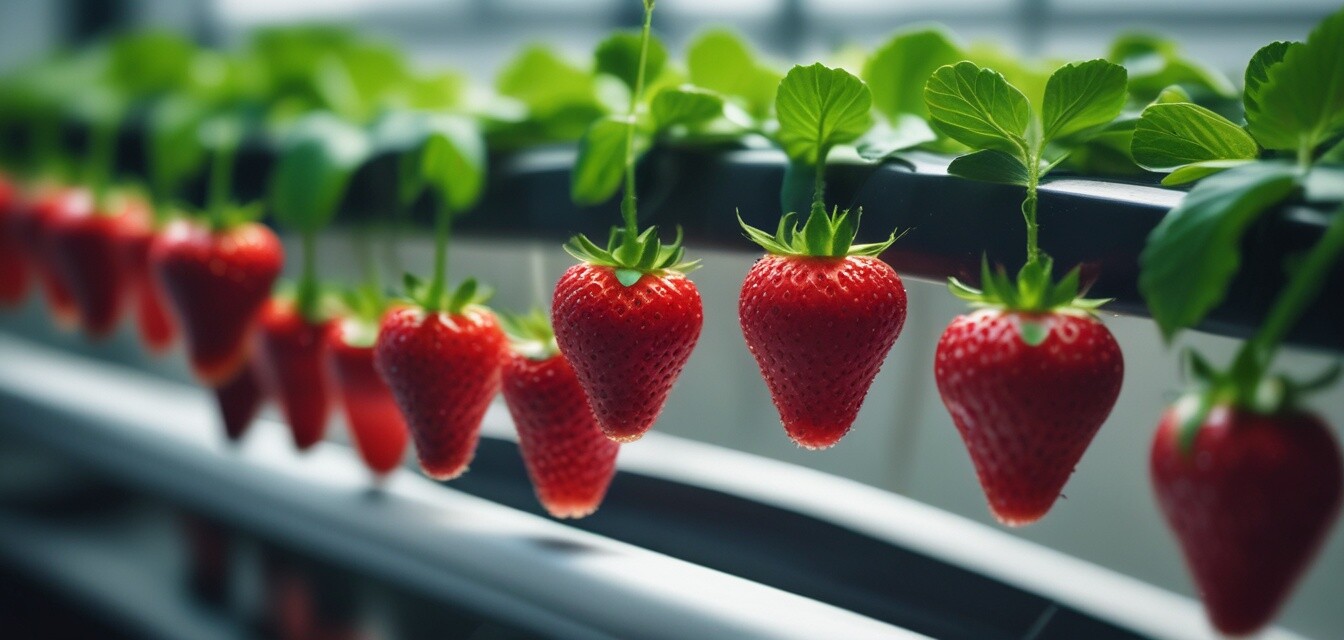
Hydroponic Strawberries: A DIY Guide
Key Takeaways
- Strawberries can thrive in a hydroponic system, leading to improved yield and quality.
- Choosing the right growing medium and nutrient solution is essential.
- Temperature, pH levels, and lighting play crucial roles in strawberry growth.
- Regular monitoring of plant health and consistent care will enhance the growing experience.
Growing strawberries using hydroponic systems can be a rewarding experience. This guide aims to provide you with step-by-step instructions so that you can enjoy delicious, home-grown strawberries year-round. Along with basic growing techniques, you will learn tips for ensuring healthy plants and juicy fruits. Let's dive in!
Why grow strawberries hydroponically?
Hydroponics offers numerous benefits for growing strawberries compared to traditional soil planting:
- Faster growth: Hydroponically grown strawberries often mature more quickly.
- Higher yields: Plants can produce more fruits in a smaller area.
- Less pest issues: A controlled environment reduces the risk of pests and diseases.
- Resource efficiency: Less water and nutrients are used in a hydroponic setup.
Essential materials for your hydroponic strawberry garden
| Item | Description |
|---|---|
| Hydroponic system | Choose a system like NFT (Nutrient Film Technique) or Deep Water Culture. |
| Growing medium | Options include coco coir, rock wool, or clay pebbles that provide anchor support. |
| Nutrient solution | Utilize a balanced nutrient solution suitable for strawberries. |
| Lighting | Use grow lights if growing indoors for adequate light exposure. |
| Seedlings or seeds | Start with quality strawberry seedlings or seeds of a variety suited for hydroponics. |
Step-by-step guide to growing hydroponic strawberries
1. Set up your hydroponic system
Begin by assembling your chosen hydroponic system. Ensure it has proper drainage and is easy to access for maintenance.
2. Prepare your growing medium
Fill your containers with the selected growing medium. If using substrates like rock wool, soak them in water to make them ready for planting.
3. Plant your strawberries
Place the seedlings or seeds into the growing medium. If planting seeds, ensure they are placed at the correct depth based on the variety you’re using.
4. Mix your nutrient solution
Incorporate a nutrient solution according to the manufacturer's instructions. Check for pH levels, aiming for a range of 5.5 to 6.5.
5. Monitor and maintain
Regularly check the water levels, nutrient concentration, and pH balance. Make adjustments as necessary. If possible, consider using monitoring sensors for real-time tracking.
6. Provide sufficient light
If indoors, ensure your strawberries receive 12-18 hours of light daily. Adjust the distance of grow lights according to the height of your plants.
7. Harvest and enjoy!
Once the strawberries are ripe, snip them from their stems and enjoy fresh fruit right from your garden!
Best practices for hydroponic strawberries
- Climate control: Maintain consistent temperatures between 65°F to 75°F.
- Pest management: Regularly inspect plants and utilize eco-friendly pest control methods.
- Prune regularly: Remove dead leaves to promote airflow and prevent diseases.
- Rotate crops: To prevent the build-up of pests and diseases, rotate your strawberry crops with other plants periodically.
Common challenges in growing hydroponic strawberries
While hydroponic gardening has its advantages, challenges can arise. Some common issues include:
- Pests: Although reduced, keep an eye out for aphids or spider mites.
- Nutrient deficiencies: Regularly check the nutrient solution and adjust to avoid deficiencies.
- Light issues: Insufficient light can lead to poor growth. Ensure adequate light penetration.
Conclusion
Growing strawberries hydroponically is a fulfilling and efficient way to cultivate delicious fruit. By following this DIY guide, you can create your own hydroponic system and enjoy knowing exactly how your food is grown. For more ideas on optimizing your garden experience, visit our DIY Projects section.
Pros
- Higher yields compared to traditional soil gardening.
- Year-round production regardless of climate.
- Efficient use of water and nutrients.
Cons
- Initial setup can be costly.
- Requires regular monitoring and maintenance.
- Risk of diseases if the system is not managed well.

